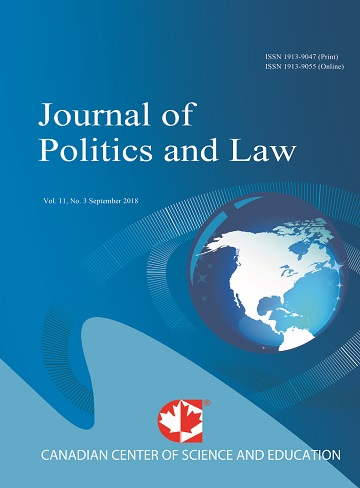Obama’S Afghanistan Strategy: A Policy of Balancing the Reality with the Practice
- Wahabuddin Raees
Abstract
President Barack H. Obama promised to stabilize Afghanistan. President Obama in 2009 introduced the AfPak or Afghanistan and Pakistan Policy. Obama’s AfPak Policy in outlining America’s intentions in Afghanistan was announced over two phases: the Obama March 27, 2009, Afghanistan Strategy and the Obama December 1, 2009, Afghanistan Strategy. The AfPak Policy’s recognition that there is no military-only solution to the Afghan quagmire and focus on soft powers and nation-building efforts distinguishes it from Bush’s Afghanistan Policy. The Policy will fail if the US fails to consolidate the power of the central government, abandons the intra-Afghan dialogue and if the dialogue it suggests with powers with stakes results in ‘sourcing out’ Afghanistan again. President Obama should not have made public the July 2011 deadline for a drawdown and eventual withdrawal of the US troops from Afghanistan in his December 1, 2009, tier of AfPak Policy announcement. The US has a ‘stabilizing’ role and therefore, must work out an alternative approach such as strengthening the existing ‘declaration of strategic partnership’ with Afghanistan to remain engaged. The Obama administration should have shared Secretary Gates’s fear that the Afghans will view the US as an occupying power similar to the Soviet Union. The US needs to convince Afghanistan’s neighbors that Afghanistan is a sovereign state and its sovereignty and territorial integrity must be respected by the international community. The Policy’s assertion that the US is not an occupier and respects Afghanistan’s rights as a sovereign state when it remains engaged in its politics is praiseworthy.
- Full Text:
 PDF
PDF
- DOI:10.5539/jpl.v3n2p80
Journal Metrics
h-index (2017): 14
i10-index (2017): 39
h5-index (2017): 9
h5-median (2017): 11
Index
- Academic Journals Database
- ACNP
- ANVUR (Italian National Agency for the Evaluation of Universities and Research Institutes)
- Berkeley Library
- CNKI Scholar
- COPAC
- CrossRef
- DTU Library
- EBSCOhost
- Elektronische Zeitschriftenbibliothek (EZB)
- EuroPub Database
- Excellence in Research for Australia (ERA)
- Genamics JournalSeek
- GETIT@YALE (Yale University Library)
- Ghent University Library
- Google Scholar
- Harvard Library
- HeinOnline
- INDEX ISLAMICUS
- Infotrieve
- Jisc Library Hub Discover
- JournalGuide
- JournalTOCs
- LOCKSS
- MIAR
- Mir@bel
- NewJour
- Norwegian Centre for Research Data (NSD)
- Open J-Gate
- PKP Open Archives Harvester
- Publons
- Pubmed journal list
- RePEc
- ROAD
- Scilit
- SHERPA/RoMEO
- Standard Periodical Directory
- Stanford Libraries
- UCR Library
- Ulrich's
- UniCat
- Universe Digital Library
- UoS Library
- WorldCat
- Zeitschriften Daten Bank (ZDB)
Contact
- William TaiEditorial Assistant
- jpl@ccsenet.org
